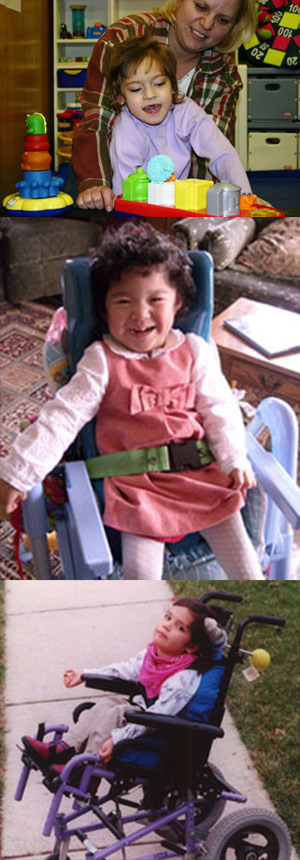Cerebral Palsy affects muscle control and coordination. Other vital functions that also involve motor skills and muscles e.g. breathing, drinking and eating movements may also be affected when a child has Cerebral Palsy. As with Down syndrome or Autism, there is no known conventional treatment for Cerebral Palsy except standard physiotherapy which does not aim to treat the condition but more of a rehabilitation. However, Spastic Cerebral Palsy in particular, has shown significant improvement with precursor stem cell therapy over the years. The age factor when precursor stem cell therapy is provided plays a vital role in the determination of the success rate. In general, the earlier the treatment of precursor stem cell therapy begins the better chance these children have of overcoming developmental disabilities or learning new ways to accomplish the tasks that challenge them. Many children go on to enjoy near-normal adult lives if their disabilities are properly managed.
Cerebral Palsy is one of the most common congenital disorders of childhood. It is a term used to describe a group of disorders affecting body movement and muscle coordination. Even though Cerebral Palsy affects muscle movement, it isn’t caused by problems in the muscles or nerves.
Cerebral Palsy is a disorder that affects the muscle tone, movement and motor skills. Cerebral Palsy is an abnormality of motor function and postural tone that is acquired at an early age, even before birth. The motor system of the body provides the ability to move and control movements. The abnormality in the motor system is the result of brain lesions that are non-progressive. A brain lesion is any abnormality of brain structure or function.
Cerebral Palsy affects approximately 1 to 3 out of every thousand of children born. However, the risk is much higher in infants born with very low weight and in premature infants. Cerebral Palsy is usually caused by brain damage that occurs before or during a child’s birth or during the first 3-5 years of a child’s life. The common forms of Cerebral Palsy that will show improvement after precursor stem cell therapy are:
- In Spastic forms that respond to intensive training (possible up to 10 years old)
- Dyskinetic forms – choreoathetosis and ataxic form (possible up to 10 years old)
- Hypotonic forms – possible up to 4 years old. However, a clinical trial of one fetal precursor stem cell therapy is recommended.


